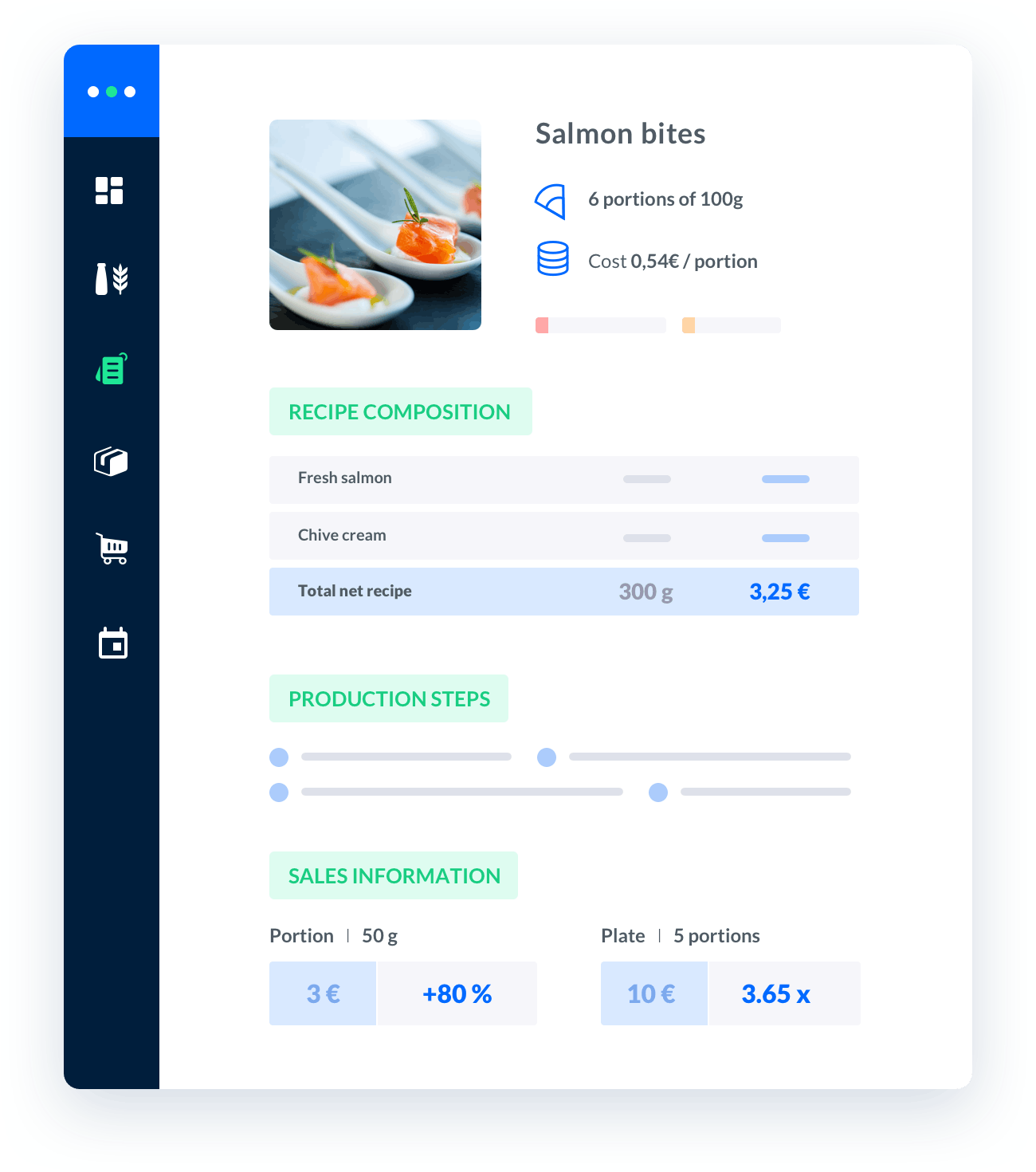cloud kitchen cost breakdown
When it comes to starting a cloud kitchen, it's essential to understand the cost breakdown involved.This comprehensive guide will provide you with valuable insights into the various expenses associated with setting up and running a cloud kitchen.1.

Melba: the food cost app to optimize the profitability of your restaurant
Discover how to optimize the profitability of your restaurant with melba

The ultimate guide to food cost restaurant
Learn more about the food cost basis and how to reduce your food cost percentage
When it comes to starting a cloud kitchen, it's essential to understand the cost breakdown involved. This comprehensive guide will provide you with valuable insights into the various expenses associated with setting up and running a cloud kitchen.
1. Initial Setup Costs
Before you can start operating your cloud kitchen, there are certain initial setup costs that you need to consider:
- Kitchen Infrastructure: This includes the cost of leasing or purchasing a space, renovation, and installing necessary equipment such as cooking appliances, ventilation systems, and storage units.
- Permits and Licenses: Acquiring the required permits and licenses from local authorities and regulatory bodies may involve certain fees.
- Technology Setup: Investing in technology infrastructure, including POS systems, order management software, online ordering platforms, and delivery management systems.
- Website and Branding: Developing a professional website, logo, and branding materials.
1.1 Kitchen Infrastructure
The cost of setting up the kitchen infrastructure can vary depending on factors such as location, size, and the type of cuisine you plan to offer. It's crucial to invest in high-quality equipment and ensure that the kitchen layout is efficient for smooth operations.
1.2 Permits and Licenses
Obtaining the necessary permits and licenses is a legal requirement for operating a cloud kitchen. The costs associated with permits and licenses can vary based on your location and the specific regulations in place.
1.3 Technology Setup
Investing in the right technology infrastructure is essential for managing orders, inventory, and deliveries efficiently. The cost of technology setup can vary depending on the complexity and scalability of the systems you choose.
1.4 Website and Branding
Creating a professional website and developing a strong brand identity are crucial for attracting customers. The cost of website development and branding materials can vary based on your specific requirements.
2. Ongoing Operational Costs
Once your cloud kitchen is up and running, there are several ongoing operational costs to consider:
- Rent/Lease: The monthly cost of leasing the kitchen space.
- Utilities: Expenses related to water, electricity, gas, and other utilities required for the kitchen.
- Staffing: The cost of hiring and paying staff, including chefs, cooks, delivery personnel, and administrative personnel.
- Ingredients and Supplies: The cost of purchasing high-quality ingredients, packaging materials, cleaning supplies, and other essential items.
- Marketing and Advertising: Promoting your cloud kitchen through online and offline channels to attract customers.
- Insurance: Protecting your business with appropriate insurance coverage.
2.1 Rent/Lease
The monthly rent or lease cost will depend on the location, size, and demand for commercial kitchen spaces in your area. It's important to factor in this recurring expense when calculating your overall operational costs.
2.2 Utilities
Utilities, such as water, electricity, and gas, are necessary for running the kitchen. The cost of utilities can vary based on your usage and the rates charged by local service providers.
2.3 Staffing
Hiring and retaining skilled staff is crucial for the smooth operation of your cloud kitchen. The cost of staffing will depend on the number of employees, their roles, and local labor market rates.
2.4 Ingredients and Supplies
Investing in high-quality ingredients and essential supplies is essential for maintaining the quality of your food offerings. The cost of ingredients and supplies can vary based on your menu and the volume of orders.
2.5 Marketing and Advertising
Marketing and advertising are essential for creating awareness and attracting customers to your cloud kitchen. The cost of marketing and advertising will depend on the channels and strategies you choose.
2.6 Insurance
Protecting your cloud kitchen with appropriate insurance coverage is vital. The cost of insurance can vary based on factors such as location, coverage type, and the size of your operation.
3. Revenue Generation and Profitability
Understanding the revenue generation potential and profitability of your cloud kitchen is crucial for long-term success. Here are a few factors to consider:
- Menu Pricing: Setting competitive prices that cover your costs while remaining attractive to customers.
- Order Volume: The number of orders you receive daily, weekly, or monthly.
- Operating Hours: The duration and timing of your cloud kitchen's operation.
- Customer Retention: Building a loyal customer base and encouraging repeat orders.
- Cost Optimization: Continuously reviewing and optimizing your costs to improve profitability.
3.1 Menu Pricing
Setting the right prices for your menu items is crucial for covering your expenses and generating profit. Conduct market research and competitor analysis to determine competitive yet profitable pricing strategies.
3.2 Order Volume
The number of orders you receive directly impacts your revenue. Implement effective marketing strategies and ensure consistent quality to attract and retain customers, thereby increasing order volume.
3.3 Operating Hours
Choosing the right operating hours based on customer demand and kitchen capacity is essential. Optimizing your operating hours can help maximize revenue while minimizing operational costs.
3.4 Customer Retention
Building a loyal customer base is crucial for sustainable revenue. Implement customer retention strategies such as loyalty programs, personalized offers, and excellent customer service to encourage repeat orders.
3.5 Cost Optimization
Regularly review your operational costs, identify areas for optimization, and implement cost-saving measures without compromising quality. This can significantly impact the profitability of your cloud kitchen.
By considering the various cost factors involved in setting up and running a cloud kitchen and focusing on revenue generation and profitability, you can make informed decisions and increase the chances of success in the competitive catering industry.






